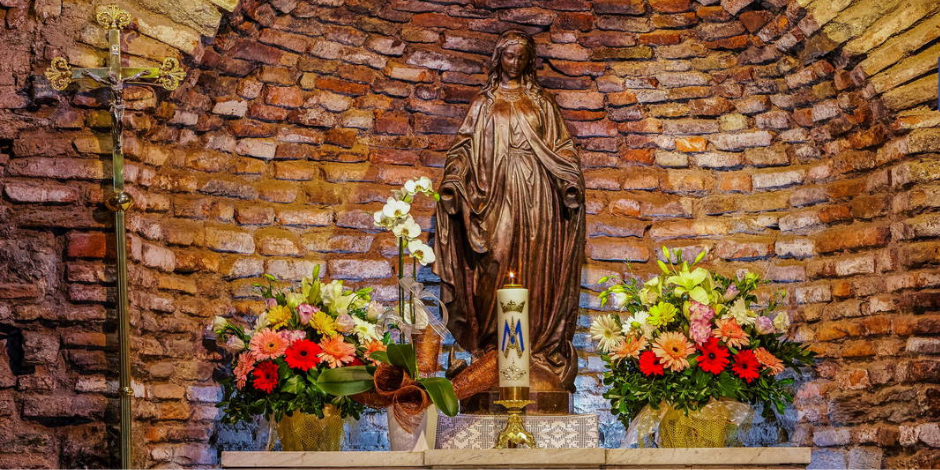St. Virgin Mary’s House
- It is located in Izmircity (Turkey)
- It is a Catholicsanctuarylocated on Bülbüldağı, aroundEphesus, and is 7 km awayfrom Selçuk districtcenter.
- It is believedthat Mary, themother of Jesus, livedanddied.
- It is on the UNESCO World HeritageList.
- Theplace can be visitedallyearroundand is floodedwithvisitorsthemost on August 15, when it is believedthatthe Virgin Mary ascendedtoheaven.
- Must-seeplaces at the site: Virgin Mary Statue, Temple, Wishing Wall, BaptismalPoolandHolyWater (Image 1)
- Forthelocation, you can click on the link https://maps.app.goo.gl/a6dzeEdQgxgm25pr6

Image 1: a) Virgin Mary Statue b) Templeexteriorappearance c) Interiorview of thetemple d) Wishing Wall e) BaptismalPool f) HolyWater
VISITOR TIPS:
- St. Virgin Mary’s House can be visitedeveryday, from 8:00 am to 6:00 pm (08:30-17:00 in winter)
- Today, therestoredhouseserves as a chapel. Mass is heldeveryday.
- Visitorsareexpectedtodressmodestlyandbehaverespectfully.
- You can takephotos in areaswherephotography is allowed.
- Therearenopublic transport optionstogettothe House of the Virgin Mary. Ifyoutravelindependently, youneedtorent a car (yayayok rent a car), take a taxi, orwalkthedistance of 7 km fromthenortherngate of Ephesus, or5.5 km fromitssoutherngate.
- Touristplacesnearthetemple:theTemple of Artemis, the Ancient City ofEphesus, St. Jean Church, İsa Bey MosqueandBath, TheCave of the Seven Sleepers, ByzantineAqueducts, thePollioAqueductand ŞirinceVillage (Image 2)

Image 2: Importanttouristicplaces of Selçuk District
NOTES:
IMPORTANT DATES OF SELÇUK DISTRICT
Image 3
- 15 AUGUST:Death Anniversary of Virgin Mary (Image 3a)
- IN SEPTEMBER:International Selçuk-EphesusCultureandArtsTourism Festival andIndependence Festival in thedistrictcenter (Image 3b)
- ON THE THIRD SUNDAY OF JANUARY: Selçuk-EphesusCamelWrestling Festival on thePamucakcoast (Image 3c)

Image 3: ImportantDates Of Selçuk District
KEY WORDS:
Turkey, Izmir, Selçuk, Bülbül Mountain, Virgin Mary, Ephesus, 15 August, Ruins, Temple, Wishing Wall, BaptismPool, HolyWater, Chapel, Ephesus Ancient City, St.JeanChurch, İsa Bey Mosque, Temple of Artemis, EphesusArcheologyMuseum, Seven SleepersCave, Şirince, International Selçuk-EphesusCulture Art Tourism Festival andLiberationFestivals, Pamucak, Selçuk-EphesusCamelWrestling Festival
More Detailed Information: https://www.hzmeryemanaevi.com/tarihce-ve-gelenek/

